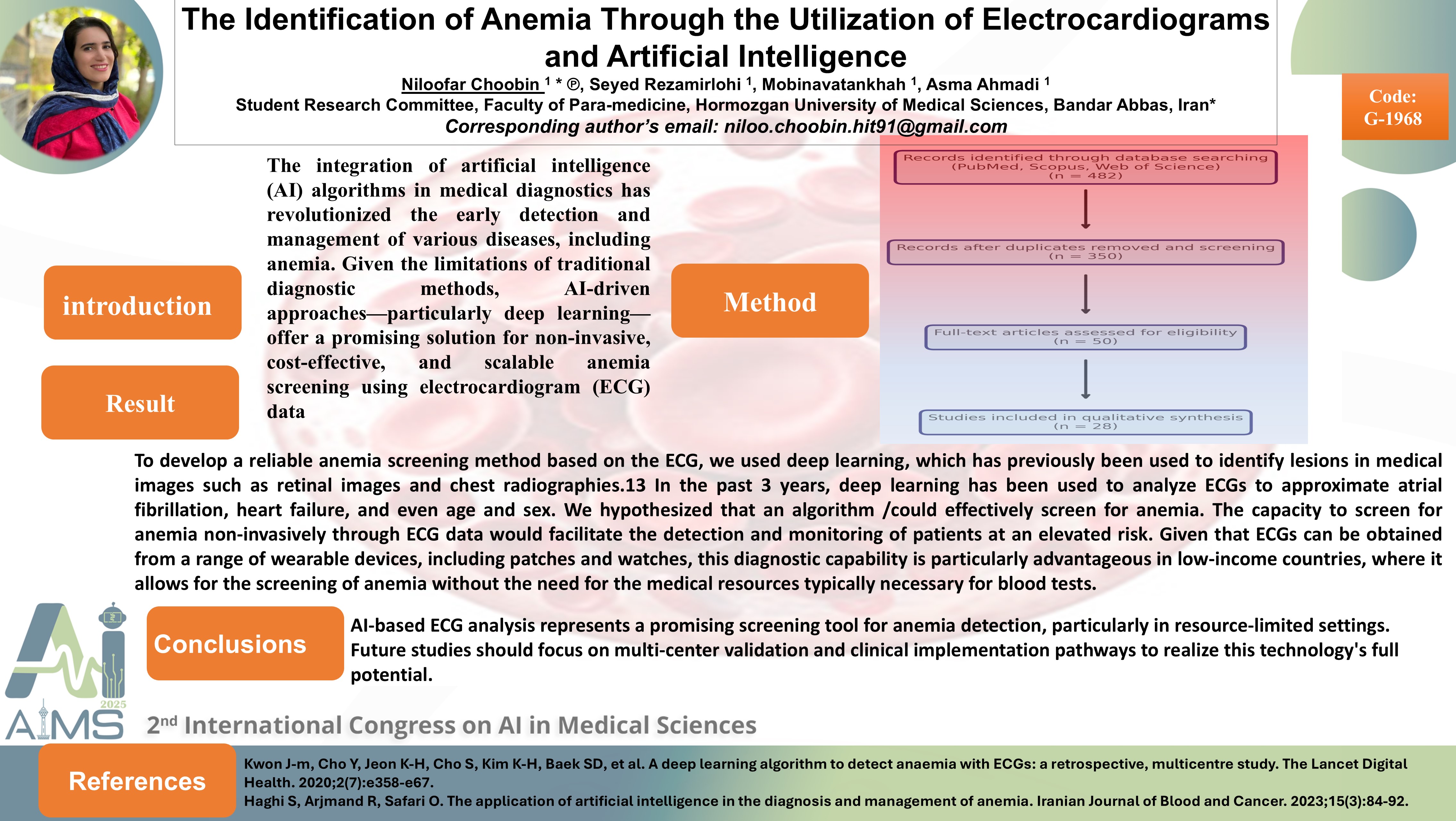The Identification of Anemia Through the Utilization of Electrocardiograms and Artificial Intelligence
Code: G-1968
Authors: Niloofar Choobin * ℗, Seyed Rezamirlohi, Mobinavatankhah, Asma Ahmadi
Schedule: Not Scheduled!
Tag: Biomedical Signal Processing
Download: Download Poster
Abstract:
Abstract
introduction: The integration of artificial intelligence (AI) algorithms in medical diagnostics has revolutionized the early detection and management of various diseases, including anemia. Given the limitations of traditional diagnostic methods, AI-driven approaches—particularly deep learning—offer a promising solution for non-invasive, cost-effective, and scalable anemia screening using electrocardiogram (ECG) data. method: To conduct this systematic review, a comprehensive literature search was performed across PubMed, Scopus, and Web of Science databases, focusing on studies published between 2015 and 2023. Key search terms included "anemia detection," "ECG," "deep learning," and "AI in hematology," combined with Boolean operators (AND, OR) to refine retrieval. The initial search yielded 482 articles, which were screened based on predefined inclusion and exclusion criteria.Following a rigorous quality assessment using the PRISMA (Preferred Reporting Items for Systematic Reviews and Meta-Analyses) guidelines, 28 high-quality studies were selected for final analysis. This review highlights the advancements, challenges, and future directions of AI-based ECG interpretation for anemia screening, emphasizing its potential to enhance diagnostic accuracy in resource-limited settings. result: To develop a reliable anaemia screening method based on the ECG, we used deep learning, which has previously been used to identify lesions in medical images such as retinal images and chest radiographies.13 In the past 3 years, deep learning has been used to analyse ECGs to approximate atrial fibrillation, heart failure, and even age and sex. We hypothesised that an algorithm /could effectively screen for anaemia. The capacity to screen for anaemia non-invasively through ECG data would facilitate the detection and monitoring of patients at an elevated risk. Given that ECGs can be obtained from a range of wearable devices, including patches and watches, this diagnostic capability is particularly advantageous in low-income countries, where it allows for the screening of anaemia without the need for the medical resources typically necessary for blood tests. Conclusion: AI-based ECG analysis represents a promising screening tool for anemia detection, particularly in resource-limited settings. Future studies should focus on multi-center validation and clinical implementation pathways to realize this technology's full potential.
Keywords
Anemia, Artificial Intelligence, Deep Learning, Electrocardiography
